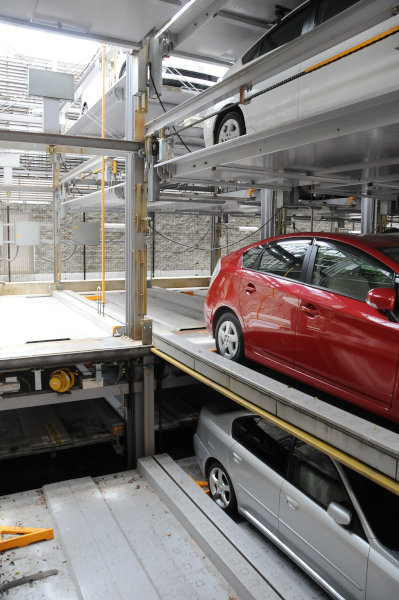Japan as a country ranks among the most densely populated places on Earth. Especially in the big cities, space is at a premium, and a family of 5 living in a 60 m2 apartment is not unusual. Another place where this lack of space shows in parking, and Japan has a number of interesting and often unique approaches to deal with the issue.
Although Japan boasts one of the safest and most reliable public transport systems on the planet, owning a car is still seen as a status symbol, in particular when it comes to expensive and foreign cars. However, before you lay down your money to buy an expensive car, you must prove that you have a parking lot for it, no matter if you live in Tokyo or somewhere in the Japanese Alps.
In Japan, curbside parking is virtually nonexistent, so what to do? Some people rent a paid parking lot nearby their home. Often these are temporary lots where the owner waits for permission to erect a new building. Many of the parking lots people use on their errands are like these too, and the pricing often varies according to area.
Most people, however, park on their own property right in front of their home or they rent (or possibly own) a parking lot at their apartment building. And this is where things get really interesting!
My own block of apartments was built in the 1970s, at a time when this part of Kyoto was still considered “outskirts” (and a little it still is). This means that there was ample space between the buildings with room for trees and grass and – parking lots. More modern buildings, or those that are in inner city, do not have or cannot afford this luxury to begin with. So, they build parking garages, but with a twist!
In many Japanese garages, the parking lots are stacked on top of each other with no space for a person to move between the cars. The idea is as follows: All you need to build one is space for, say 10 parking lots in two rows plus access to the first row. Let’s also say you have space for 4 storeys, one underground and three above ground. The whole thing is one large metal “rack” (for lack of better words), where each parking lot can move individually left/right and up/down as needed. You rent your very own parking lot and only have access to this one.
Now, say you need your car, but it’s not in the first row on ground level – how do you get it out? You have a key that you insert into the control box. Your parking lot with your car will automatically move to one of the front row spots so you can get to your car. Other lots that are blocking the way automatically move. Of course, it may take a while until your car is in the right spot, so people need to factor that in if they are in a hurry.
On the other hand, this kind of parking racks saves a huge amount of space. In some areas, they are also used for temporary parking. Often, they are in very high but narrow buildings, and customers only have access to the ground floor. They leave their car there and an operator will take care of it – valet parking for everyone!
Here is a video on how parking works in one of these parking garages. It’s similar to the private ones in apartment blocks, but has an even more eerie feel (why are there announcements when there’s nobody down there??)
It is quite interesting to see such a system operating. I know that I was totally stunned the first time I saw one. In fact, a friend of mine whose building has one of these parking racks says that there are always tourists taking photos of it.
Japanese parking garages – the secret tourist attraction. Who would have thought!



They exist here too. 🙂 My mom used one at work years ago. I was terrified of being left in the car and not getting out quickly enough. XD
I understand, that idea does scare me too!
I only saw one of these car parks once before coming to Asia. My boyfriend at uni rented a parking lot in a newly renovated house, where they had converted the basement to parking. There was an elevator for the cars, and each lot was doubled up, although a bit differently as here. Parking there was a precision job, the whole basement was tight…